M45 - Detailed
study about postprocessing and analysis of captured image
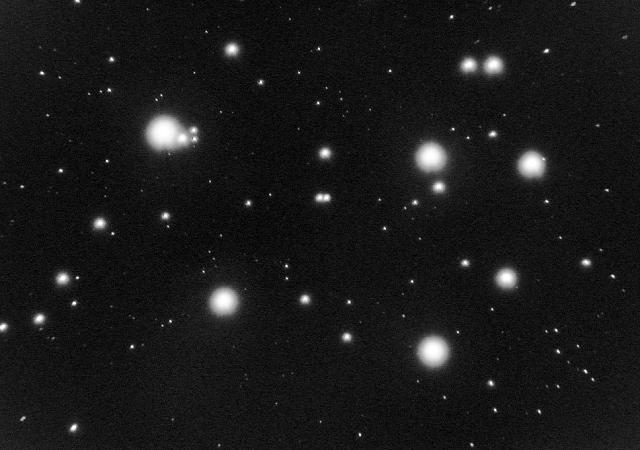 |
M45 - The
Pleiades 11.01.2003 (21:14
- 22:13 UT)
Resolution: 6.1 arcsec/pixel
Camera: Nikon
Coolpix 995, f=22.4mm
Telescope: 80mm F5 Refractor, 25mm eyepiece
afocal
Result focal length: 358.4mm (~44X Zoom)
Result focal ratio: F4.48
Exposure: 42x20s (ISO400, sunny white balance),
Noise Reduction
Camera control: The
Force software
Processed by K3CCDTools,
Maxim DL Demo, then in Corel PhotoPaint.
Seeing: windy, soft fog, Moon in first quarter,
temperature -8°C |
The above picture is a result of several processing
steps. I would like to invite you to a little tour
through this steps.
A, Frames capturing
B, Frames
integration
C, Post-processing
(Going deeper)
D,
Integration again
E, Analysis of
negative image
F, Reference M45
image taken by Johannes Schedler
A, Frames capturing
1, At firtst I captured frames by Nikon Coolpix 995
Digital camera by means of The Force
software. The details about attaching digital camera to
my scope are here: Example of using
Nikon Coolpix 995 digital camera for astronomy purposes.
2, Then I moved all frames to computer's hard drive.

Example of raw frame resized to 25%.
Click the image to see 50% size. |
B,
Frames integration
1, I summed all 42 captured frames in K3CCDTools program. K3CCDTools
allows summing virtually unlimited number of frames with
almost unlimited (under Win2k or WinXP) frames size.
By summing the captured frames we will obtain one result
frame with much higher dynamic range (32 bit depth for
each color channel) and less noise. Here is the result
image (without any further processing, only resized to
reasonable size):
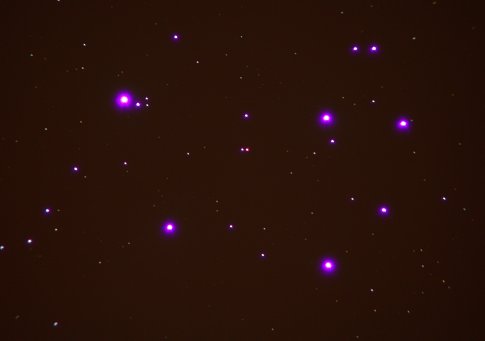
Result of integration of 42 frames resized to 25%.
Click the image to see 50% size.
The result is very similar to raw frame, but it
is less noisy.
Note: The difference between raw and result
frames is reduced by JPG compression used for
Internet. |
2, The result of summation has dynamic range higher
than 8-bit per color. As normally used picture formats as
BMP/JPG/PNG and similar store only 8-bit information per
color, the result image should be stored in FIT format. I
saved result picture in FIT16 format, which is suffcient
for summation up to 256 frames. For higher number of
frames I use FIT32 format.
3, K3CCDTools offer Histogram stretching tool, which
enables fast post-processing of the result picture. I
used it very often for basic operations. For advanced
post-processing I use FIT export and then I process the
image in specialised astronomy programs (e.g. Maxim DL
Demo).
Here is an example of simple histogram stretching and
applying gamma 2.00:
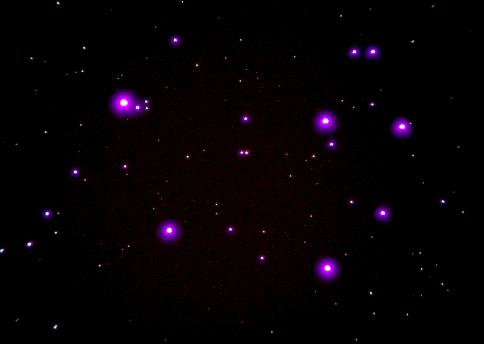
Result of integration of 27 frames resized to 25%.
Histogram stretching (separate for each color
channel) + gamma 2.00
Click the image to see 50% size. |
C, Post-processing
As I didn't capture Flat Field frames (I had not
enough time for it), I was forced to use more advanced
software for post-processing which enables background
flattening. Furthermore, in order to get more from
picture I decided to use gray scale picture, which is not
so sensitive to strong histogram stretching.
1, I loaded FIT images (exported by K3CCDTools) into
Maxim DL Demo (MDL) and I stacked them into one grayscale
FIT image.
2, Flatten background command applied to suppress
uneven illumination (caused by vignetting)
3, I applied gamma factor 2.00 (in MDL it is 0.5)
Going deeper
4, Then I started to play with histogram stretching.
Less stretching gave me picture with less noise, but also
less faint details. Here are examples of 5 various
histogram settings (starting with less stretching):
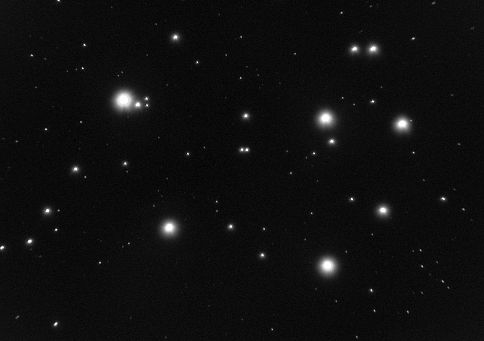 |
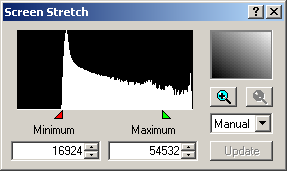
42x20s, gamma 2.00, histogram 1
Comment: Decent picture |
 |
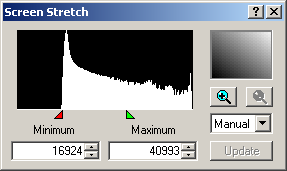
42x20s, gamma 2.00, histogram 2
Comment: Still decent picture, more stars visible |
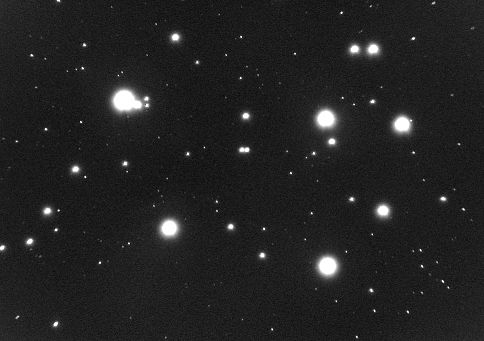 |
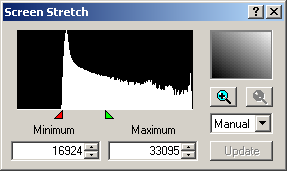
42x20s, gamma 2.00, histogram 3
Comment: Some brighter stars start to merge,
increased background noise |
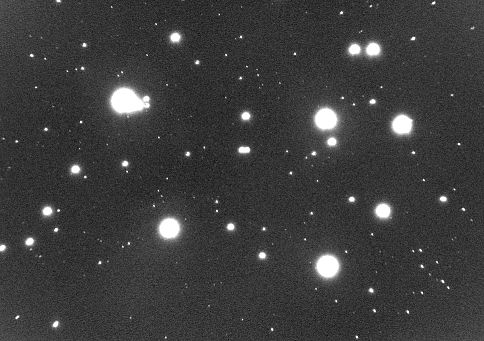 |
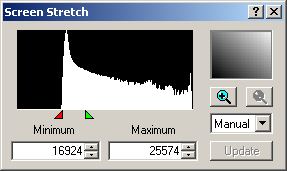
42x20s, gamma 2.00, histogram 4
Comment: More stars merged, background noise
easily visible |
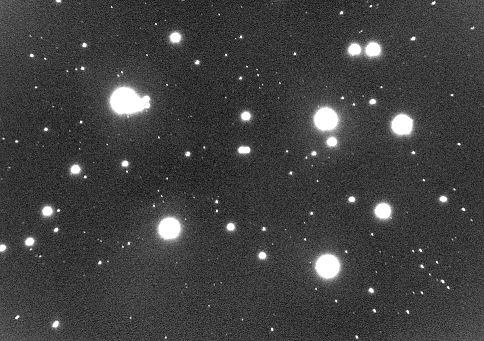 |
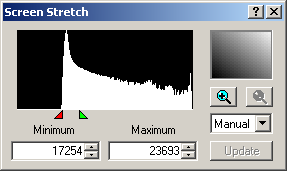
42x20s, gamma 2.00, histogram 5
Comment: Many stars merged, rather high
background noise, BUT hint of nebulosity arround
Merope star is visible . |
It is very interesting to see, how much information is
hidden in result summed picture (exported to FIT files).
The following picture shows the above 5 picture in one
animation (resized to 2/3 of above size):
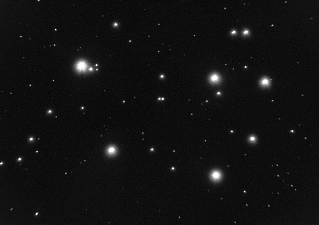
Click the picture to
see full size animation. |
Conclusion:
Higher histogram stretching reveals more details in the
picture, but some details are also lost (merged stars)
and image noise is increasing.
The most annoying thing (at least for me) is merging
bright objects.
So there is question - Is there a possibility to show
faint objects while bright objects are not merged?
If you look again at the top picture of M57, you will
see, that answer is YES.
D, Integration again
1, I saved all pictures as result of histogram
stretching from 1 to 5
2, I load the pictures into K3CCDTools and summed them.
No further processing.
And here is the result:
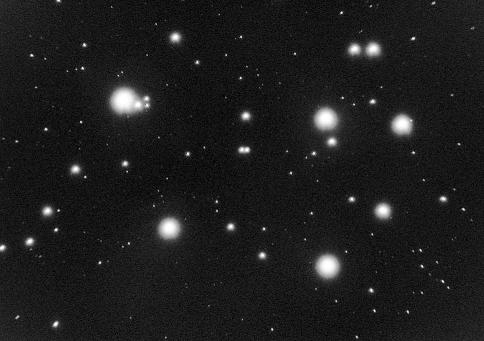
Click the
picture to see full size photo. |
E,
Analysis of negative image
At the end of our tour I would like to show you
negative images, which are useful for analysis of
captured details. Black stars on white sky are easily
detectable.
Here is negative image of Pleiades with rather strong
histogram stretching:
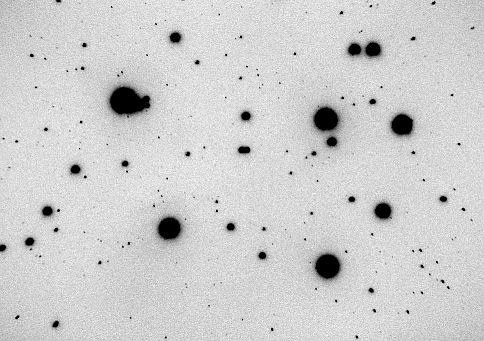
Click the
picture to see full size photo. |
After even stronger histogram stretching the hint of
nebulosity around Merope star is visible:
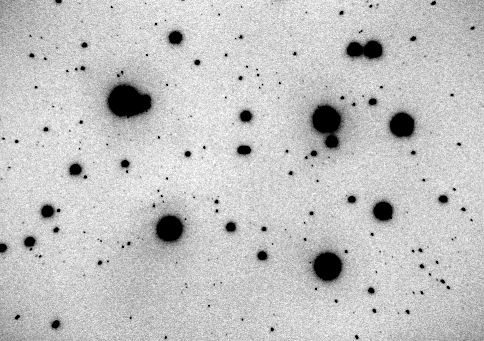
Notice hint of nebulosity around Merope and
around other stars.
The darker background parts in corners are
residues after background flattening. This is
normal for such strong histogram stretching. |
Only for comparison here is the negative image of
Pleiades without applying Flatten Background command:
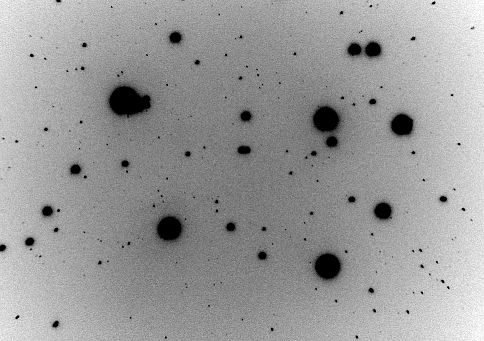
The effect of vignetting is clearly visible. But
very soft hint of nebulosity around Merope is
still detectable. |
F, Reference M45 image taken by Johannes
Schedler
And here is beautiful picture of Johannes Schedler (Panther
Observatory). I chose it as a reference image of M45
for looking for features in Pleiades:
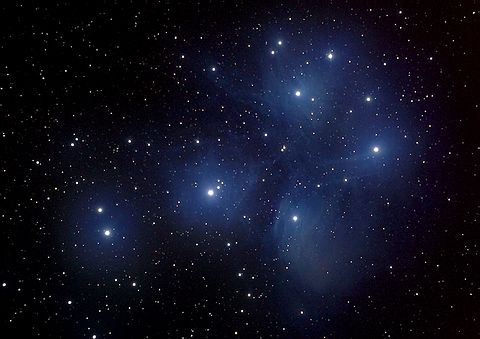
Click the
picture to see full size photo. |
M45
- The Pleiades 04.10.
2002 (00:30 UT)
Taken by Johannes
Schedler during ITT star party
Camera: Canon D60
Telescope: 105 mm TMB refractor F6.2
Exposure: 4x300s (ISO800, sunny white balance),
autoguided, DF subtracted
Processing: darks subtracted, averaged, curves,
unsharp mask, color balance, size reduced to 40%;
cropped, all in Photoshop
Seeing: mag 6 sky, some haze presentEven hints
of IC349 visible south of Merope (click the
picture to enlarge):

For those, who are interesting, here is a raw
frame (click the picture to see full size raw
frame):

My thanks belong to Johannes
Schedler for providing his beautiful photo
and information.
|
Back to M45 page
Computer generated images,
real images, drawings and texts, if not mentioned
otherwise, are property of the author and may not be
reproduced or used without permission of author.

Last Update: 15.01.2003
|